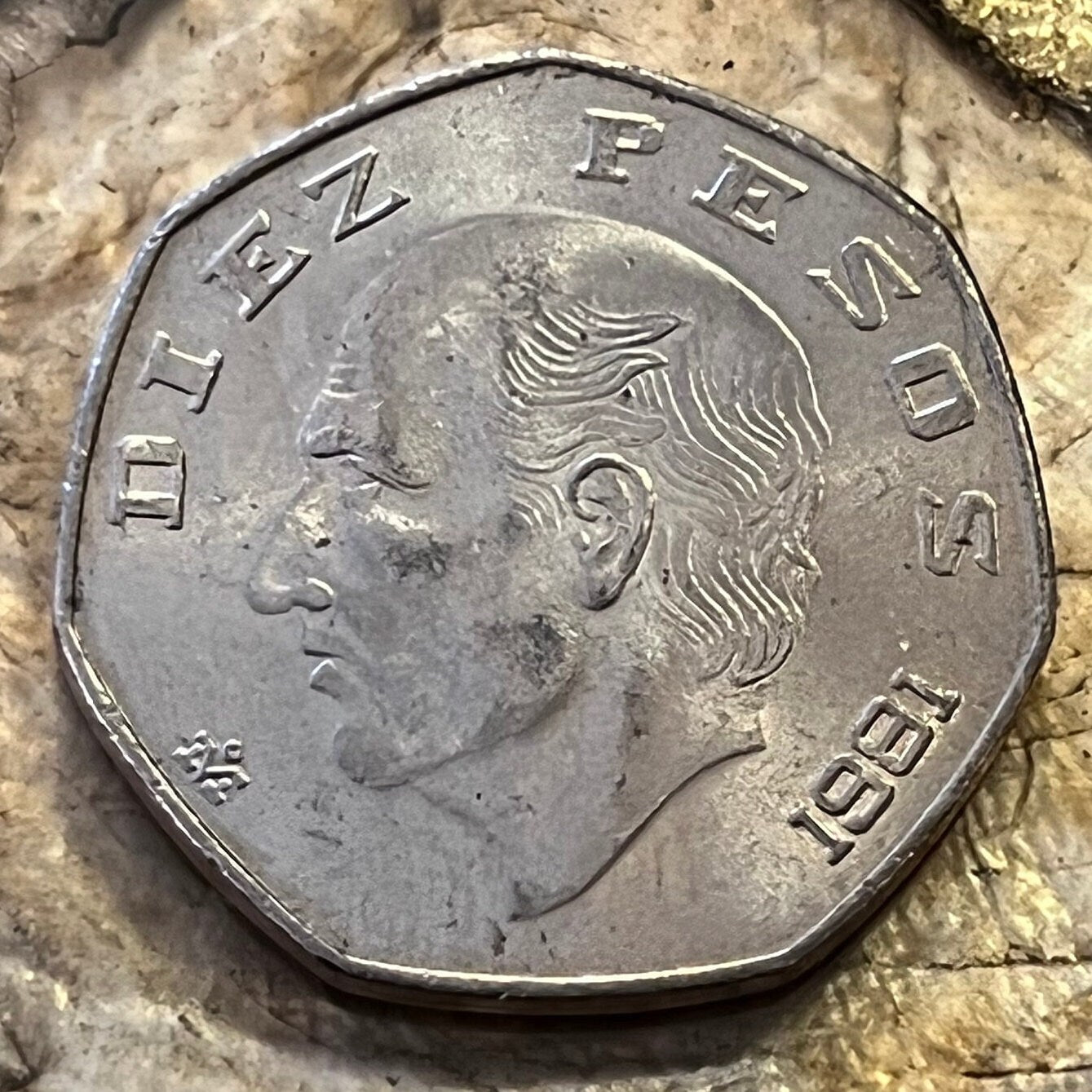elemintalshop
Don Miguel Hidalgo & Eagle with Snake 20 Centavos Mexico Authentic Coin Money for Jewelry (Cry of Dolores) (7-Sided) (Father of the Nation)
Don Miguel Hidalgo & Eagle with Snake 20 Centavos Mexico Authentic Coin Money for Jewelry (Cry of Dolores) (7-Sided) (Father of the Nation)
Couldn't load pickup availability
Don Miguel Hidalgo & Eagle with Snake 20 Centavos Mexico Authentic Coin Money for Jewelry and Craft Making (Grito de Dolores) (Cry of Dolores) (Mexican Revolution) (Heptagon) (7-Sided) (Father of the Nation)
Reverse: Value, Portrait of Miguel Hidalgo y Costilla to the left
Lettering: DIEZ PESOS
Translation: Ten pesos
Obverse: "Estados Unidos Mexicanos" in a semicircle over the Mexican coat of arms: a Mexican golden eagle standing on a prickly pear cactus devouring a rattlesnake. At the base of the cactus, there is a holm oak (Encino) branch on one side and a laurel branch on the other.
Lettering: ESTADOS UNIDOS MEXICANOS
Translation: United Mexican States
Features
Issuer Mexico
Period United Mexican States (1905-date)
Type Standard circulation coin
Years 1974-1985
Value 10 Pesos (10 MXP)
Currency Peso (1863-1992)
Composition Copper-nickel
Weight 10.2 g
Diameter 30.5 mm
Thickness 2.36 mm
Shape Equilateral curve heptagon (7-sided)
Technique Milled
Orientation Medal alignment ↑↑
Demonetized 15 November 1995
Number N# 1072
References KM# 477, Schön# 72
Wikipedia:
Don Miguel Gregorio Antonio Ignacio Hidalgo y Costilla y Gallaga Mandarte Villaseñor (8 May 1753 – 30 July 1811), more commonly known as Don Miguel Hidalgo y Costilla or Miguel Hidalgo, was a Criollo Catholic priest, leader of the Mexican War of Independence and recognized as the Father of the Nation.
He was a professor at the Colegio de San Nicolás Obispo in Valladolid and was ousted in 1792. He served in a church in Colima and then in Dolores. After his arrival, he was shocked by the rich soil he had found. He tried to help the poor by showing them how to grow olives and grapes, but in New Spain (modern Mexico) growing these crops was discouraged or prohibited by the authorities so as to avoid competition with imports from Spain. In 1810 he gave the famous speech, "Cry of Dolores", calling upon the people to protect the interest of their King Fernando VII (held captive by Napoleon) by revolting against the European-born Spaniards who had overthrown the Spanish Viceroy.
He marched across Mexico and gathered an army of nearly 90,000 poor farmers and Mexican civilians who attacked and killed both Spanish Peninsulares and Criollo elites, even though Hidalgo's troops lacked training and were poorly armed. These troops ran into an army of 6,000 well-trained and armed Spanish troops; most of Hidalgo's troops fled or were killed at the Battle of Calderón Bridge. After the battle, Hidalgo and his remaining troops fled north, but Hidalgo was betrayed, captured and executed.
********
Wikipedia:
The coat of arms of Mexico (Spanish: Escudo Nacional de México, literally "national shield of Mexico") depicts a Mexican (golden) eagle perched on a prickly pear cactus devouring a rattlesnake. The design is rooted in the legend that the Aztec people would know where to build their city once they saw an eagle eating a snake on top of a lake. The image has been an important symbol of Mexican politics and culture for centuries. To the people of Tenochtitlan, this symbol had strong religious connotations, and to the Europeans, it came to symbolize the triumph of good over evil (with the snake sometimes representative of the serpent in the Garden of Eden).
The Law on the National Arms, Flag, and Anthem regulates the design and use of the arms. They feature in the centre of the flag of Mexico, are engraved on the obverse of Mexican peso coins, and are the basis of the Seal of the United Mexican States, the seal used on any official documents issued by the federal, state or municipal governmental authorities. The seal differs from the arms by the addition of the words Estados Unidos Mexicanos ("United Mexican States", the full official name of the country) in a semicircle around the upper half.
Share



















